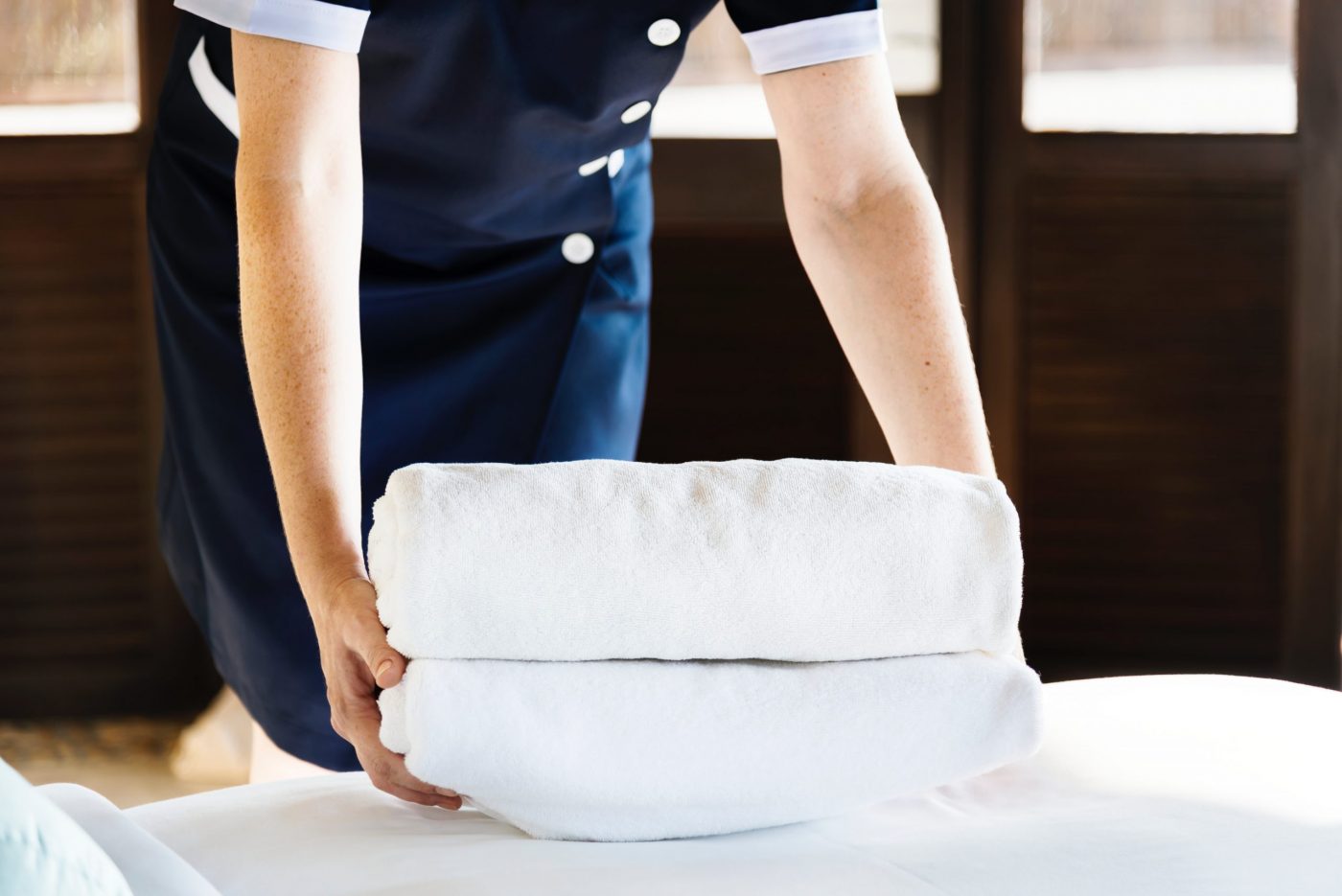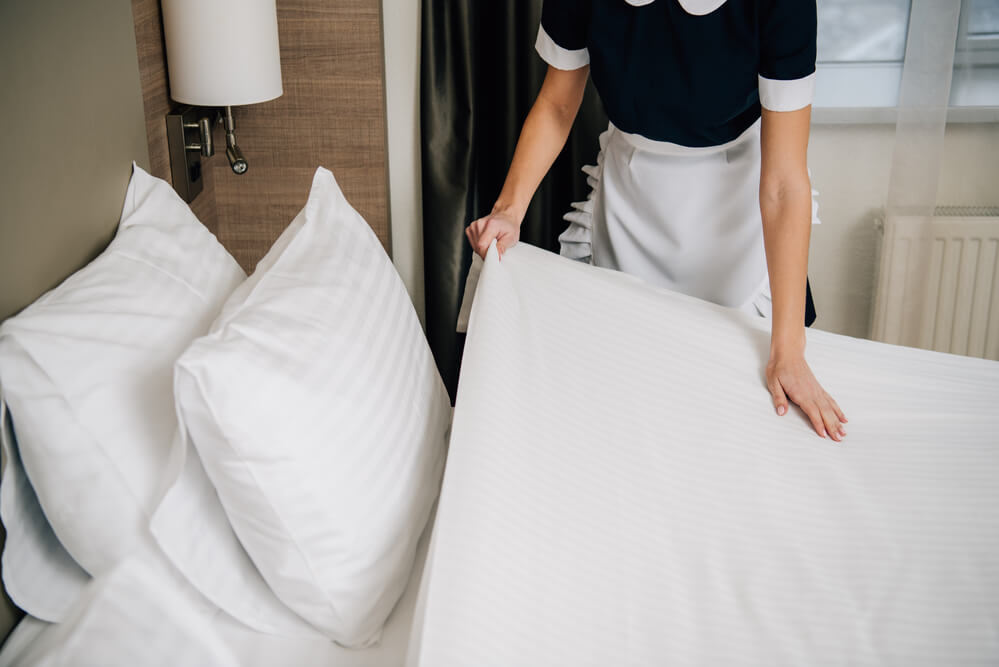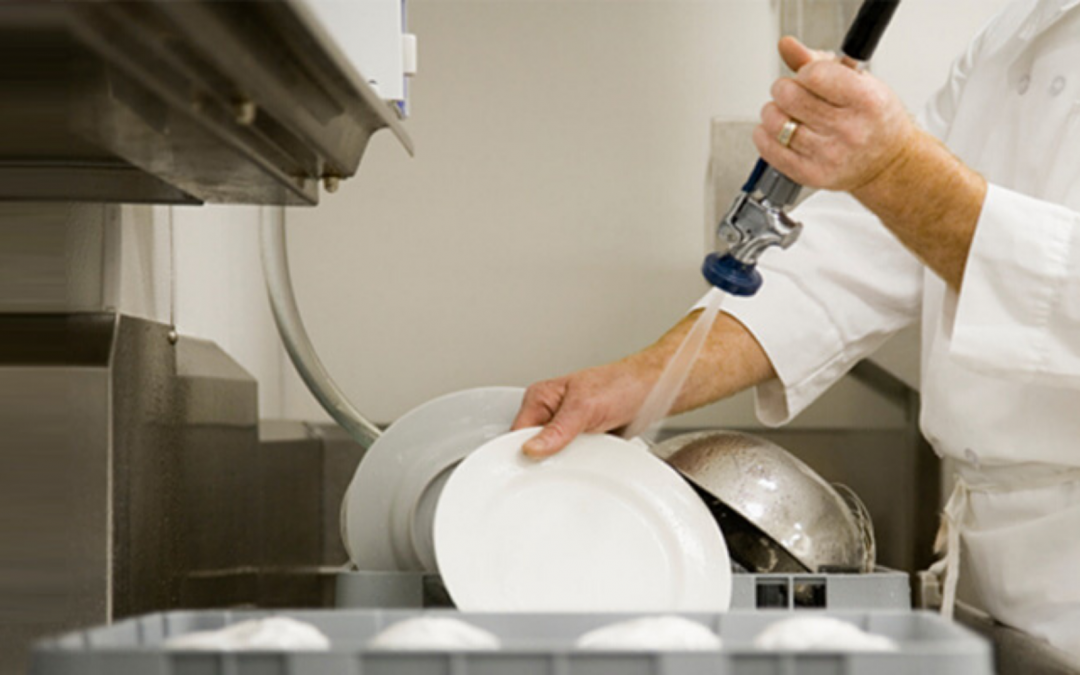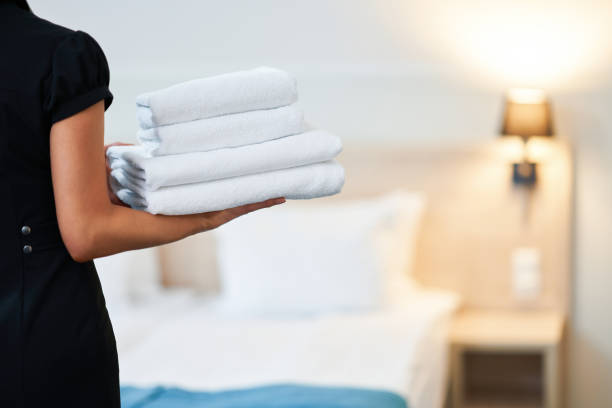TIPS AND STANDARD PRACTICES
- Dispose of Trash-Garbage bags and liners are emptied and thrown away. Following this, the inner part of the bin must be thoroughly sanitized. Finally, replace the bin liner with a new bag.
- Dust at a higher level first- Dust anything above shoulder level while working in either a clockwise or counter-clockwise motion. This also makes the damp mopping process much more manageable, like sweeping a floor of the debris before mopping.
- Damp wipe- Use a damp cloth mixed with a neutral disinfectant to all high-touch surfaces except for glass surfaces. Common hi-touch surfaces in offices include light switches, phones, doorknobs, and desks. This is an extremely important step due to the threat of bacteria concentrated on these surfaces.
- Restock items and products- After cleaning the high-touch surfaces, the next step requires remediation of some sort. Especially in the case of bathrooms, products like toilet paper, paper towels, soaps, which aid in everyday cleanliness, must be restocked for two purposes. One function is that if publicly available cleaning items are available, it will help reduce the spread of bacterium and other contagions. The second, of course, is to maintain social standards.
- Clean or dust mop the floor level-With all the shoulder level and high surfaces cleaned, move to the lower areas, including the floor. This step involves using a dust or a ‘dry’ mop to collect floor dust to make the next step easier. Bulky items and obstructing objects must be navigated around; no corner must be left with uncollected dirt, which is also a health hazard.
- Inspect the overall area for any missed steps-Before proceeding to the last stage, it is crucial to walk around the premises and inspect the site for additional cleaning or anything broken/ out of the ordinary. It is not required of a janitor or commercial cleaner to repair any damaged items. However, damages must be reported to the owner. Finding damages early on in this step also does not interfere with the wet mopping process, which may cause extra cleaning time if dirt is tracked across the floor.
- Damp-mop any wettable floor surface-The final step to cleaning a room includes the wet mopping process, which adds a delicate finish to the floor, which can easily be disrupted. A cleaning bucket is filled with a neutral or diluted cleaner. Mop around the edges of the premises as best as possible, then pursue the center by poking toward the middle in an eight-sided star shape to minimize the chances of stepping on the wet floor. Once this is complete, the floor must be left to air dry. Finally, add a wet floor sign.
- Hard-surface floor cleaning and maintenance- Cleaning of the floor and maintaining the space by regular cleaning through broom and wipes.
- Daily carpet care- Carpet cleaning is to be done as the carpet captures the dust and dirt from the shoes and sandals of the people who walk through it. The carpet must be cleaned through a vacuum cleaner or washed with time as needed.
- Reception area or lobby cleaning- This area draws the attention of the people and visitors thus it is needed to be cleaned and disinfected.
- Dusting and window washing- Dusting can be executed through a broom or through a vacuum cleaner. Window washing needs complex tools which can be cleaned through it.
- Office system cleaning- Office cleaning consists of daily cleaning of the space with a vacuum cleaner, and broom up the webs or the spider then wiping down space with a wet cloth.
- Waste removal- Waste can be eliminated by dumping the unwanted things and then cleaning after waste gets removed.
- Sanitation programs- It is more important in the current time as in the house, or at commercial places, etc. things are in contact with people mutually such as door handles, Fridge handle, microwave handle, taps, etc and all these consists of germs which get exchanged from person to person. Hence daily sanitization of these objects along with the space in which people sit should be done.
- Kitchen/restroom cleaning/restocking- All these needs daily cleaning before you go out with the related operations. Cleaning, washing, and disinfectant must be done all through the said space.
- Daytime cleaning- Brooming is the initial process or vacuuming all through space is to be done and post to that wipeout space with wet broom or wiper takes place.
- Post Construction Cleaning Phases
- Phase-1-Rough Clean- Removal of debris, trash, leftovers. Stickers and packing covers on items are removed.
- Phase-2-Light Clean- Proper deep cleaning of Rooms, Stairways, Pathways, Windows, exteriors, toilets, devices.
- Phase-3- Final Clean- Touch up cleaning of the deep cleaned places and signoff of the rooms.
- Post Construction Cleaning Checks
- Walls are clean and are free from marks, dirt, and smudges
- Power washing and cleaning of windows and frames
- Plastic/sticker removal from furniture, windows, and doors
- Dusting, wet and dry, of ceilings, lights, fans, heaters
- Floors, that are free from debris, especially on edges and corners, are clean and polished
- Vacuum cleaning
- Trim cleaning
- Threshold cleaning
- Cleaning of all appliances, cabinets, and shelves from inside and out
- Proper disposal of trash and debris
- Addressing of any safety issues, loose wires, and leaks, to the construction contractors
- Detailed checking, for the last time, of all the space, corners and inner surfaces once the cleaning is completely done
- Interior & Exterior Painting- 10 steps for painting wall
- Tape the trim. After preparing walls for painting, using specialized masking tape, such as Shurtape’s Frog Tape, according to label instructions to cover the trim can help paint clean, sharp lines.
- Determine the type of paint you have on your walls. Since using the wrong type of primer or paint can lead to early paint failure, figuring out the type of paint you have on your walls is very important. Rub a small area with denatured alcohol. If the paint loses glossiness or comes off on the rag, it’s latex paint; if it doesn’t, it’s oil-based paint.
- Choose the right primer. For new drywall, use a drywall primer-sealer product to level surface texture and prevent flashing. Applying a stain-blocking primer over water stains, ink or crayon will prevent bleed-through along with blistering and peeling paint. For engineered wood products, such as medium-density fiberboard, use shellac or an oil-based primer to prevent swelling. You can also find primers that allow you to switch from oil-based paint to latex paint, or vice versa, as long as the surface has been properly prepared.
- Apply the primer. Start by pouring the primer into a paint tray or five-gallon bucket with a roller grid, then dip the roller into the primer, removing excess primer to prevent drips. Place the roller half way up the wall, and roll upward, close to the ceiling, and downward toward the floor, slightly overlapping each stroke. Make sure that you also prime the ceiling and all corners properly using a brush. Let the primer dry completely before painting
- Paint the ceiling. Dip the roller into the paint tray and remove excess paint. Start in one corner and proceed diagonally across the ceiling in a “W” pattern, overlapping each stroke. Make sure that you cover the ceiling line previously painted?
- Cut in corners. With a 2-to-3-inch brush, paint each corner of the wall, brushing along the corner, outward a few inches. To smooth out brushstrokes, run the brush lightly over previous strokes. Paint the rest of the wall right away to smooth out any remaining strokes.
- Paint walls along the trim. Dip a 2 to 3-inch brush into the paint and run it against the taped trim and along the ceiling line. Work it along the tape line or ceiling outward about three inches from the tape/ceiling line.
- Apply the paint. Using a 12-inch roller, roll the paint in the same “W” pattern, overlapping strokes and cut-in corners and edges. For a uniform appearance, make sure there are no missed spots. Let the paint dry properly and apply a second coat if necessary.
- Remove the tape. Allow the paint to dry for at least 30 minutes. Remove the tape, peeling it off slowly and evenly to prevent paint damage.
- Finish off the trim. After removing the tape, one more thing you need to do is to paint the trim. Start as close to the wall as possible and work your way along the trim covering from top to bottom. Use a narrow, angled brush to paint thinner areas of trim and a wide, straight-edge brush for broader areas.
- Cabinets & Furniture Painting
- STEP 1: Dissemble the pieces
- STEP 2: Do initial sanding and remove dust and debris with tack cloth.
- STEP 3: Prime it to seal odors and better paint results.
- STEP 4: Sand it again to remove primer drips.
- STEP 5: Paint with Semigloss Latex Paint.
- STEP 6: Protect with a paint finisher.
- Marble & Stone Restoration- 4 Steps of Marble Floor Restoration
- GRINDING- It’s the most powerful and dynamic step, also known as lippage removal, delipping or flattening. Even new installed marble floors can have some tiles to be upper or lower of floor flatness. This step removes all ledges, roughness and brings flatness to marble floors. Also, this step can remove the deepest scratches and stains.
- HONING- Honing is the step of floor restoration that provides smoothing the marble floor with industrial diamonds, which brings up more shine to the marble. Honing will also remove scratches, stains and give a more uniform appearance. In some cases, honing is all that’s needed to get you stone looking spectacular again.
- POLISHING- Polishing gives a semi-shining or shining effect on the marble floor. Polishing is done by industrial diamonds, but smaller graded, than while honing. For marble floors in good condition, polishing can be enough to bring back the shine.
- CRYSTALLIZATION- Crystallization is a method of marble floor finishing. It brings “mirror-like” shine by chemical reaction on the surface of the marble. Crystallization also creates a microfilm on the surface of marble, which is more solid and durable and helps to preserve the color and the brightness of the marble. Crystallization is a very good method for regular stone maintenance.
Location
Dubai, United Arab Emirates
Our hours
08:00 AM – 06.00 PM
Monday – Saturday
Contact us
Phone: +971 50 1842524
Email: operations@skill-kart.com




